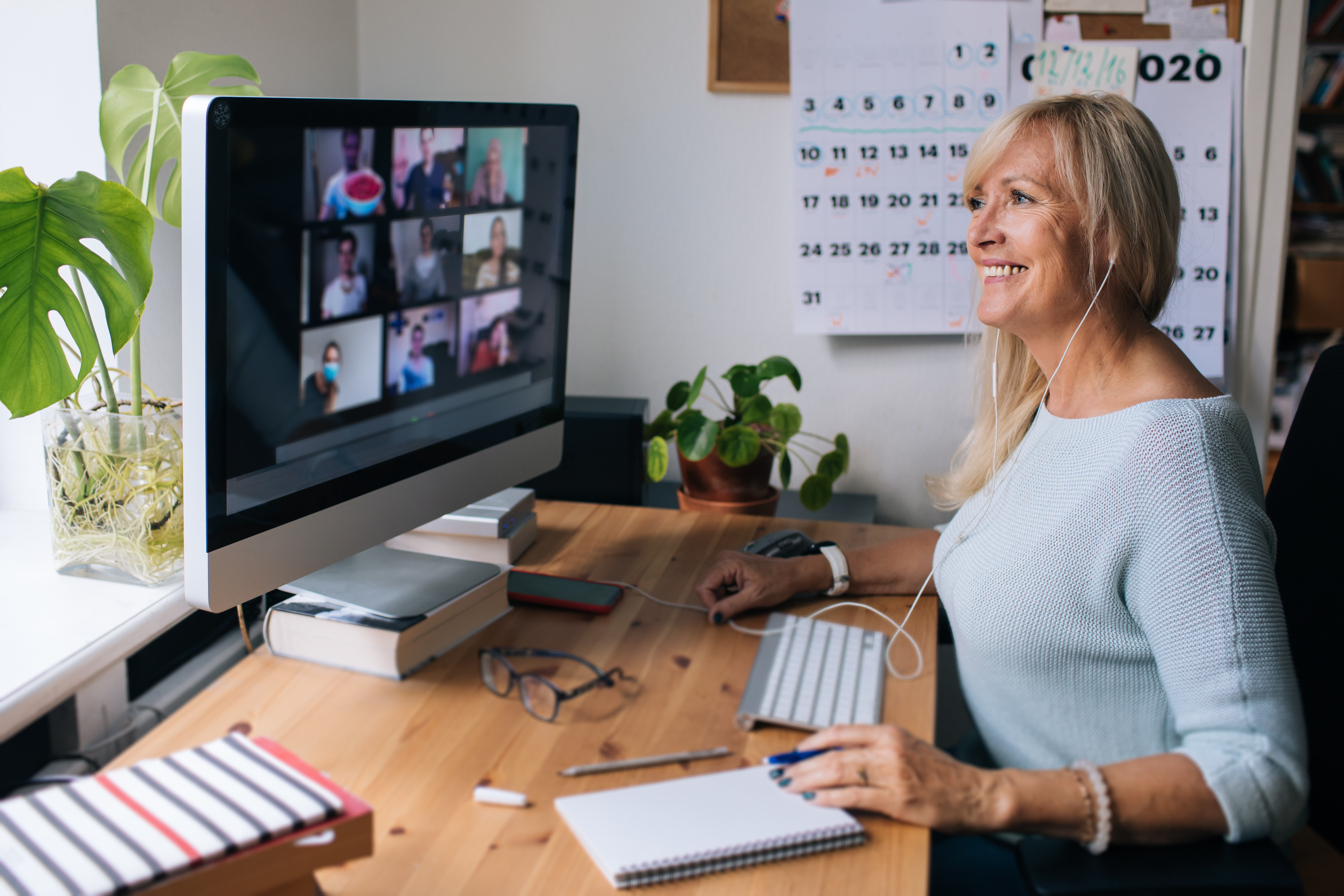It’s been years, yet it seems like yesterday, that I received the email about the departure of one of my favorite senior managers. These emails were plentiful and always included certain expressions, “is no longer with us”, “has moved on”, “we thank them for their contributions” was a polite way to say, they were fired. The message always ended with “So let’s get back to business as usual.” It was such a transactional and cold way to acknowledge a “human being” who’d spent years working endless hours leading their people towards its goals. Even when you were happy, they were gone, the message to employees was foreboding – “This is what we think of you and how you’ll be treated.”
This transactional way of working is so reflective of our times. In my capacity as Executive Coach, leaders at all levels continuously share how they’re tasked with so much that they get on automatic pilot to just get it all done. This stress disconnects us from any sense of purpose in our work and forces us to only see people through the lens of productivity and results. We don’t experience connection (how I feel when I’m with you) with others because we’re not connected within ourselves.
With the pandemic, leaders were forced to stop, pivot in a moment’s notice and find creative ways to keep their organizations alive. It was a test of their resiliency to make difficult decisions quickly and stay connected with their people, so their teams would actively participate in saving the organization. For many, on a personal level, it was the first time they’d experienced time and connection with family and rediscovered what it is to be human.
If something so radical wakes us up, helps us build greater leadership capabilities and capacity to connect with our people and families, why go back? Do we want to be on automatic pilot again to just get through the busy day? Do we want to disconnect from others, including our internal self; treat people transactionally and only build relationships by task completion, becoming so disengaged that we lose touch with what it is to be human? Do we want to go back to that kind of business as usual?
The following is what my clients learned about themselves as they experienced this pandemic and what they’ll do differently. Perhaps it may help you to better thrive as a leader in a new normal.

BE INTENTIONAL ABOUT INVESTING IN YOUR RELATIONSHIPS WITH YOUR PEOPLE
One of the biggest insights my clients had was the imperative to stay connected with their people, working from home. Making regular zoom calls to check in, they were surprised how happy people on their teams were to hear from them. In just asking how “they were” and being present, open and interested, they learned other personal aspects of their life they weren’t aware of previously. They realized how much time they focused only on the work people did and the results expected. Now with new personal distinctions, they are better at working with and developing their people. They’re reminded that the simple act of asking, being interested and listening to what’s happening in their lives creates a “connected” relationship, better engaging and motivating their people because they feel supported and cared for.
Here are some of the ways my clients are building deeper relationships and finding new ways to connect in more meaningful ways: Taking breaks during the day and doing meditation practices that help to be centered, present and open; Journaling personal aspects of their people when in conversation so they inquire about what’s important to them; Observing and writing the individual gifts revealed through their people’s actions in approaching situations in their life, thus helping to better understand and develop them; Coaching them on a virtual leadership path to help embody new competencies. In doing this, one of my clients found when turnover in general was high because of intense workloads and less staff to assist, her team was the only one in the company where people stayed because they felt valued and seen.

APPRECIATE YOUR PEOPLE MORE OFTEN
My clients know that appreciating their people has a positive impact on productivity. During the pandemic however, they found themselves doing it more often because people needed a greater level of connection. They were surprised to see an even more positive impact where people felt valued and energized to give 110%. What they weren’t aware of is the amazing affects dopamine has on the body. When praised, this chemical is released, giving an individual optimism, energy, focus, and connection. It elevates their drive, confidence and leadership capabilities. Unfortunately, it’s short-lived so leaders who give praise more often see encouraging results.
Some of the ways they appreciate their people more often are: Using “Gift-Centered Praise” (GCP) in conversations, emails, and group meetings. When someone’s praised for the gift behind their actions, it motivates to find other ways to use that gift because the gift is a natural part of who they are. GCP re-energizes people especially when pressured to go the extra mile; Creating virtual “Gift Circles” where members of the team express the gifts they see in each other. This can be used to open or close a meeting or retreat, celebrating birthdays, retirements. It’s a compelling way to build a culture of belonging where people feel seen and accepted for who they are.

EMBRACE CREATIVITY AS A WAY OF BEING
The pandemic forced my clients to be more creative both at work and home. Breaking routines led to new ways of looking at themselves, their people and life. Many who never considered their strength to be creativity discovered a creative gene within themselves.
One client noticed zoom calls revealed how long he could give people his full attention without being distracted. One-hour zoom meetings became thirty-minute calls with additional fifteen-minute calls more frequently. He also avoids back-to-back calls with at least a fifteen-minute break in between.
Another discovered new sources to bring the kind of energy that fosters his creativity and inspirational leadership. Being an extravert who gains energy from interaction with others, it was challenging when the pandemic hit. Being curious, he’s discovered he can get that same energy by noticing how his people are growing as leaders in their work and in their lives.
Another pivoted her apparel company, also creating Masker-AID™ – quality designed face coverings meeting CDC recommendations. Still another brainstormed with her spouse on ways they could break from work. Not being able to do the usual movie and dinner, they found scenic trails where they’ve hiked 200 miles this past year. They’ve never been in better physical shape!
My clients learned when you’re in a space of not knowing, this uncertainty creates an opening for the most creative ideas to come forward. Creativity has been described as letting go of our certainties.
Some of the best practices they’ve engaged in so they’re in the most creative state are: Sitting and Walking meditations (let go of thoughts) and other practices of letting go; Being in observation mode of yourself and others; Being curious; Redirect what you have into a new direction; Explore alternate ways to experience new opportunities.

MAKE SELF-CARE A PART OF YOUR WORKDAY NOT SEPARATE FROM IT
Working from home has created some interesting opportunities and challenges for my clients.
Here are some of the ways they’re integrating self-care into their workday.
One of my clients noticed without commute time, he was more stressed during the day. He realized how his drive relaxed and decompressed him even in L.A. traffic. So now he takes “commute” walks at the same time he used to leave work. It’s a relaxing way to get grounded and balanced and he’s seeing the positive impact on his performance and team.
Another client found herself working more hours and it was taking a toll on her energy and thus, productivity. She now uses her previous commute time to do morning walks grounding her as she starts her day. She schedules in breaks, lunch with her kids, dinner with family. This reenergizes her so she continually approaches her work in a fresh way. She’s also more conscious about respecting her people’s personal time. And she feels more effective as a leader because she’s integrated more home time with work time.
Another client saw how much work she had that didn’t need to be done or could be accomplished by her people. Now she ends her day by 3pm, works from home a few days a week and her people feel her trust in them handling the business. It’s given her time to reflect. Journaling the simple things she’s grateful for, brings balance. Envisioning what’s possible keeps her inspired and creative.

The pandemic taught my clients many lessons. In reconnecting with what it is to be human, they’ve come to appreciate the basic goodness of their lives. They’re experiencing an integration of both their personal and professional lives and finding more balance. And it’s inspired them to get off autopilot, let go of their habitual ways of engaging and connecting and instead find new avenues to bring meaning and purpose into their work and life.
Sawubona!
* Sawubona: A Zulu greeting meaning “I see you.”


